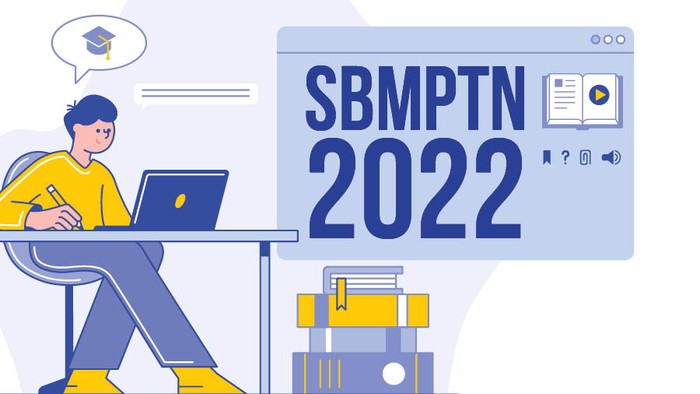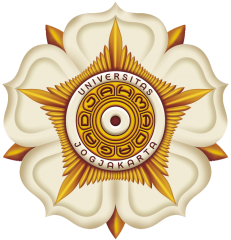Tes kemampuan bahasa Inggris menjadi materi tes ujian terbaru dalam UTBK-SBMPTN 2022. Untuk itu, peserta ujian perlu memerhatikan secara saksama seperti apa kisi-kisi dan contoh soal yang akan diujikan mulai Selasa (17/5/2022) mendatang.
Ketua Pelaksana LTMPT Budi P. Widyobroto menyebutkan, jenis soal bahasa Inggris yang diujikan adalah seperti yang diajarkan di sekolah. Hal ini disampaikannya dalam Sosialisasi PDSS, SNMPTN, dan SBMPTN 2022 pada Jumat (24/12/2021) lalu.
"Kita itu basisnya adalah basis Bahasa Inggris yang diajarkan di SLTA, jadi bukan TOEFL dan yang lain-lain," jelas Budi.
SCROLL TO CONTINUE WITH CONTENT
Tes kemampuan bahasa Inggris menjadi materi tes kebaruan dalam UTBK-SBMPTN yang sebelumnya hanya mengujikan tes potensi skolastik (TPS) dan tes kemampuan akademik (TKA). Penambahan materi tes pada tahun ini dilatarbelakangi faktor kebutuhan kemampuan berbahasa Inggris dalam perkuliahan.
"Ada tambahan di bahasa Inggris karena keputusan para rektor itu semua setuju dan semua menganggap perlu bahwa bahasa Inggris ini. Karena sekali lagi bahasa Inggris sangat diperlukan untuk mendukung proses pembelajaran di PT," kata Budi.
Total soal ujian kemampuan bahasa Inggris terdiri dari 15 soal. Topik yang diujikan berkisar di antara materi Topic and Main Idea, Purpose of the Writer, Detailed Question, Vocabulary, Reference and Restatement, Specific Information, dan Summary of the Text.
Berikut contoh soalnya yang dikutip dari buku Sukses SBMPTN Sainten oleh Tim Super Tentor, Big Bank Soal dan Bahas Bahasa Inggris SMA/MA oleh Tim Tentor Pakar, Top No. 1 SBMPTN Soshum oleh Forum Tentor Indonesia, dan Baper TPS UTBK SBMPTN oleh Tim Media Eduka.
Contoh Soal UTBK-SBMPTN Bahasa Inggris dan Jawabannya
In the 1930s, Chester F. Carlson was working in the patents department of a large electronics firm in New York City. One of the major problems in his work was the length of time and expense involved in getting patents copied, patents were lengthy legal documents, and the only ways to get them copied were to take them to a typist or to take them to a photographer. Either way of copying patents took a lot of time and cost a lot of money. He came up with the idea for a machine that would copy documents quickly and efficiently. He researched the idea in the library and then worked over a three-year period on developing a machine that used a light, an electro statically charged plate, and powder to duplicate images on paper. The result of this work was a machine that produced the first xerographic copy on October 22, 1938. He named the process "Xerox", which means "dry writing". Carlson felt that he had a good idea, one that would be extremely helpful in the business world. He tried to sell his idea to a number of large corporations, but they were not terribly interested in his machine. A few years later he sold the process to a small family-owned company. This small company grew into the giant Xerox Corporation, and both Carlson and Xerox became rather wealthy in the process.
1. The text is mainly about...
A. the life of Chester F. Carlson
B. Carlson's career in a patents office
C. the development of Xerox machine
D. how the xerox machine became popular
E. the effect of invention of the Xerox machine
Jawaban: D.
Although photography was first made public in 1839, the theory behind the principles of the medium begins with Aristotle's description of how light waves behave when projected through a small aperture. This is fundamentally the description of how a lens or camera's aperture operetes when it projects an image onto the film at the back of a camera. In the Middle Ages, Alhazen and 5 Francis Bacon extended the principle to include a large, carkened room with a small opening in one wall. In the 15 to 18" centuries this camera obscura, as it came to be called, was reduced in size and made convenient for artist to use in tracing scenic design and architectural perspective.
The chemical principles basic to photography were also described well before photography was "invented". Johann Schulze, in 1727, demonstrated that silver salts turned dark when exposed to 10 light. Carl W. Scheele, in 1777, showed that ammonia retarded the effects of light and he indicated a possible way of stabilizing the photochemical process. By the end of the 18 century, the necessary equipments (the camera obscura) were available at least to produce semipermanent photographic images.
The artistic style and aesthetics of Renaissance and post- Reneissance Europe placed a high value on a naturalistic render-ing of nature and thus legitimatized the use of machines like camera obscura by artist. By the mind 18 century, a public demand had made itself for realistic portraits, which was partially satisfied by experiments in the automatic; if permanent, recording of portrait silhouettes on photo sensitive paper. Two imperatives the need for perspectively accu rate landscape and architectural scenes and for objectively truthful portraits created a climate for certain types and styles of pictures that, after 1839, would be achieved easily by photography.
2. Which is most like the topic of the paragraph following this text?
A. Portraits of inanimate objects
B. Process of publishing portraits.
C. Photograper's status in society
D. More recent photography application
E. Photography as an exclusive form of art
Jawaban: D.
3. The word 'he' in "...and he indicated a possible way of stabilizing..." (line 10) refers to...
A. Aristotle
B. Francis Bacon
C. Johann Schulze
D. Carl W. Scheele
E. Jacques Charles
Jawaban: D.
Contoh soal UTBK Bahasa Inggris nomor 4-10, klik selanjutnya >>
Education is often viewed as school in a traditional, formal sense. Many people believe that true learning can only take place in a formal classroom setting. Others feel education occurs in many different form and environment. There may not be a definitive answer to the question of, "What is education?" However we start thinking about the purpose of education. Is it to educate youth to be responsible citizen? Is it to developed individual, as well as society, in order to ensure a society's economic success? Or is it to simply focus on developing individual talents and intelegence? Perhaps it is the balance of all three that defines education? While our answers may differ, we can perhaps agree that education is basic human right. When that right is granted growth and development, the society as a whole is more likely to improve in areas such as health, nutrition, general income and living standards, and population fertility rates.
As global citizen it is our responsibility to critically think about the issue and attempt to come up with solution to the problems plaquing education. In 1990 UNESCO launched EFA, the movement to fight quality education for all children, youth, and adult by the year 2015. The unfortunate reality is that for many countries, larger issues come before improving the quality of education. How can we achieve the goal of EFA when numerous counties around the world are faced with challenges that seems far too impossible to overcome? The answer lies in attempting to bridge some of the haps that prevent developing nation to compete with developed nations. One example is that of providing preater access to technology and narrowing the ever widening digital divide. In many ways the most basic access to technology can serve as valuable education tool. Individual who are not afforded this access area a disadvantage when trying to grasp opportunity to make life better for themselves, their families, and their community.
4. The author's main concern in the first paragraph of the passage is that...
A. There is no exact definition about education
B. Education is a fundamental individual's right
C. Everyone has right to get quality education
D. Education occurs in any place not just schools
E. Development can be gained through education
Jawaban: A.
5. The situation the author shows is the passage above is the best described as follows...
A. Quality education fundamentally ensures quality living in all sectors
B. Education is essentially everyone's right yet it still has its challenges
C. There are problems in education in spite of its significant role
D. As long as nations compete, education cannot progress
E. Absence of an exact definition causes problems in education
Jawaban: B.
A Spanish researcher and a Paraguayan the scientist have presented the most complete and detailed European study into the repertoire of sounds used by bottlenose dolphins (Tursiops truncates) to communicate. The study reveals the complexity and our lack of understanding about the communication of these marine mammals.
Until now, the scientific community had thought that whistles were the main sounds made by these mammals, and were unaware of the importance and use of burst-pulsed sounds. Researchers from the Bottlenose Dolphin Research Institute (BDRI), based in Sardinia (Italy) have now shown that these sounds are vital to the animal's social life and mirror their behavior.
"Burst-pulsed sounds are used in the life of bottlenose dolphins to socialize and maintain their position in hierarchy in order to prevent physical conflict, and this also represents a significant energy saving." Bruno Diaz, lead author of the study and a researcher at BDRI, which he also manages, said.
According to the experts, the tonal whistle sounds (the most melodious ones) allow dolphins to stay in contact with each other (above all mothers and offspring), and to coordinate hunting strategies. The burst-pulsed sounds (which are more complex and varied than the whistles) are used "to avoid physical aggression in situation of high excitement, such as when they are competing for the same piece of food, for example," explain Diaz. According to Diaz, bottlenose dolphins make longer burst-pulsed sounds when they are hunting and at times of high aggression: These are what can be heard best and over the longest period of time, and make it possible for each individual to maintain its position in the hierarchy.
The dolphins emit these strident sounds when in the presence of other individuals moving. towards the same prey. The "least dominant" one soon moves away in order to avoid confrontation. "The surprising thing about these sounds is that they have a high level of uni-directionality unlike human sounds One dolphin can send a sound to another that it sees as a competitor, and this one clearly knows it is being addressed." explains the Spanish scientist.
6. Which of following most likely restate the gist of paragraph 2?
A. Bottlenose dolphins are effective communicators
B. Burst-pulsed sounds are used by all kinds of dolphins
C. Burst-pulsed sounds are vital for bottlenose dolphins
D. Whistle and burst-pulsed are interchangeable
E. Whistle are vital for bottlenose doplhins to communicate
Jawaban: C.
7. It can be reffered from the text that...
A. Producing burst-pulsed sounds requires a lot of energy
B. Whistle are more complicated that burst-pulsed sounds
C. Mother doplhins cannot maje burst-pulsed sounds
D. Bottlenose doplhins avoud physical frictions
E. Hierarchy is not vita; for bottlenose dolphins
Jawaban: D.
There's growing agreement among exercise researches that the intense physical activities offered by most health clubs is not the only - or even necessarily the best - path to better health. In fact, the best thing most of us can do, say the experts, may be to walk.
Yes, walk. Not run or jog or sprint. Just walk, at a reasonably energetic speed (3 m.p.h-4 m.p.h) for half an hour or so, maybe five or six times a week. You may not feel the benefits all at once, but the evidence suggests that over the long term, a regular walking routine can do a world of preventive good, from lowering your risk of stroke, diabetes and osteoporosis to treating arthritis, high blood pressure and even depression.
Walking, in fact, may be the perfect exercise. For starters, it's one of the safest things you can do with your body. It's much easier on the knees than running and, beyond an occasional stitch in the side, doesn't trigger unpleasant side effects. "Regular physical activities is probably as close to a magic bullet as we will come in modern medicine," says Dr. Joann Manson, chief of preventive medicine at Harvard's Brigham and Women's Hospital. "If everyone in the U.S. were to walk briskly 30 minutes a day, we could cut the incidence of many chronic disease 30% to 40%",
If Americans want to do that, they have a long way to go. Fewer than a third of adults in the US. get the recommended amount of exercise cach day and 40% are almost completely inactive. The result, as reported by the Surgeon General last month: a nation in which obesity may soon overtake cigarette smoking as the leading cause of preventable death.
8. The phrase "If everyone in the U.S. were to walk briskly 30 minutes a day, ....." (last sentence of paragraph 3) means that...
A. Americans are used to running
B. Americans are used to walking
C. Americans walk slowly
D. Americans do not walk regularly
E. Americans run too fast
Jawaban: D.
9. All of the following statements are TRUE about Americans today, EXCEPT that...
A. Obesity is the second highest cause of death
B. They do not walk regularly every day
C. Less than a third of the adults need regular exercise
D. Almost half of the adults do not do any exercise
E. They do not prevent themselves form disease
Jawaban: A.
10. This kind of text can usually be found in a...
A. Youth tabloid
B. Scientific journal
C. Sports magazine
D. Medical textbook
E. Socioeconomic report
Jawaban: D.
Selamat pelajari materi UTBK-SBMPTN 2022 bahasa Inggris, detikers!


























































